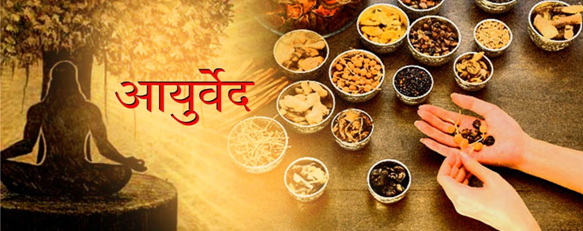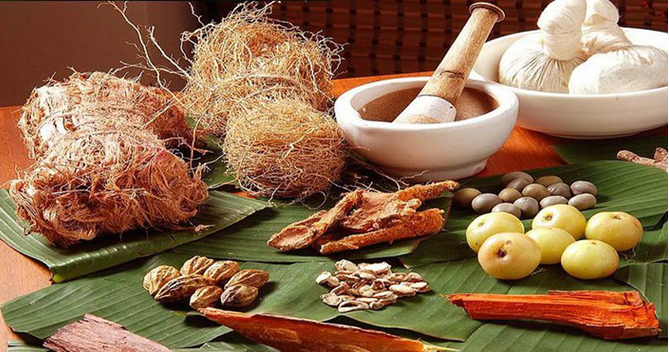- AI
- Arbitration
- Asia
- Automobile
- Bangladesh
- Banking
- Biodiversity
- Biological Inventions
- bLAWgathon
- Brand Valuation
- Business
- Celebrity Rights
- Company Act
- Company Law
- Competition Law
- Constitutional Law
- Consumer Law
- Consumer Protection Authority
- Copyright
- Copyright Infringement
- Copyright Litigation
- Corporate Law
- Counterfeiting
- Covid
- Design
- Digital Media
- Digital Right Management
- Dispute
- Educational Conferences/ Seminar
- Environment Law Practice
- ESIC Act
- EX-Parte
- Farmer Right
- Fashion Law
- FDI
- FERs
- Foreign Law
- Gaming Industry
- GDPR
- Geographical Indication (GI)
- GIg Economy
- Hi Tech Patent Commercialisation
- Hi Tech Patent Litigation
- IBC
- India
- Indonesia
- Intellectual Property
- Intellectual Property Protection
- IP Commercialization
- IP Licensing
- IP Litigation
- IP Practice in India
- IPAB
- IPAB Decisions
- IVF technique
- Judiciary
- Khadi Industries
- labour Law
- Legal Case
- Legal Issues
- Lex Causae
- Licensing
- Live-in relationships
- Lok Sabha Bill
- Marriage Act
- Maternity Benefit Act
- Media & Entertainment Law
- Mediation Act
- Member of Parliament
- Mergers & Acquisition
- Myanmar
- NCLT
- NEPAL
- News & Updates
- Non-Disclosure Agreement
- Online Gaming
- Patent Act
- Patent Commercialisation
- Patent Fess
- Patent Filing
- patent infringement
- Patent Licensing
- Patent Litigation
- Patent Marketing
- Patent Opposition
- Patent Rule Amendment
- Patents
- pharma
- Pharma- biotech- Patent Commercialisation
- Pharma/Biotech Patent Litigations
- Pollution
- Posh Act
- Protection of SMEs
- RERA
- Section 3(D)
- Signapore
- Social Media
- Sports Law
- Stamp Duty
- Stock Exchange
- Surrogacy in India
- TAX
- Technology
- Telecom Law
- Telecommunications
- Thailand
- Trademark
- Trademark Infringement
- Trademark Litigation
- Traditional Knowledge
- UAE
- Uncategorized
- USPTO
- Vietnam
- WIPO
Introduction
As a child growing up in India, or even as an adult, each one of us has had a fair experience of how grandmothers in Indian households peculiarly happen to have herbal prescriptions for all the ailments that could come our way, famously known as ‘Daadi ke nuskhe’ and we have to agree, most of the time they are pretty effective too. India had had a long standing and ancient tradition of herbal medicines which were wildly prevalent until the onset of western medicines or as we know it, ‘allopathic’ medicines during the time of colonisation and henceforth, as India opened its doors to the world. This allopathic system of medicines quickly took over because they were industrially manufactured, easily available and were a cheaper alternative to the Indian system of Medicines. Nevertheless, as ancient our system of medicines is, it is equally as effective and with lesser or negligible side effects compared to its western counterpart. Further, it is still in practice in smaller segments throughout the country however, there remains a pressing need to standardise, regulate and promote the growth of this field as it is not only physiologically viable, but also aligns with our incorporeal and cultural identity.
You may have heard of Ayurveda as the same is very popular, many of us have would have also seen nomads in tents selling Unani medicine but how many of you are aware of the other types/forms Indian system of Medicine . The Indian system of medicines is not a single form but consists various different forms of therapeutic sciences such as Ayurveda, Unani, Siddha and Sowa-Rigpa, systems of Medicine as well as Yoga and Naturopathy. Of which, Ayurveda is the most prevalent in our county and well, the Yoga discipline has taken the world by storm as people are tending to move towards a more natural and sustainable approach towards life. But the problem persisting in our country with regards to these systems of medicines is that, although they are being regulated by the Indian Medicines Central Council Act, 1970, the practice is alarmingly disorganized; thereby raising serious concerns regarding the quality of practice, provision of medicines and the standard of education imparted in the institutions concerned with the discourse of study of these systems. There have been various cases of reported of fake medicines being sold, there are numerous roadside (Indian Medicine) sellers which sell all sorts of medicines claiming it to be ayurvedic or unani and what not.
In order to cure this concern and address the lacunae, the Union cabinet has passed the ‘National Commission for Indian system of Medicines’ Bill, awaiting the report of the Standing committee, and is supposed to replace the older act in order to promote and ensure transparency in AYUSH practices. So before we set forth to know about what this proposed bill has in store for the Indian system of medicines, let us first get a brief idea about the various systems and what they are.

Ayurveda
Ayurveda literally translates to ‘Science of Life’. Atharva veda, the last of the four great bodies of knowledge contains 114 verses related to formulations for the treatment of different diseases. Knowledge gathered and developed over centuries finally gave rise to the ‘Charaka samhita- The book of Medicine’ and the ‘Sushruta samhita- The book of Surgery’ and alongwith Vagabhata’s ‘Ashtanga-hridaya’, these books form the conceptual basis of the science of Ayurveda and are also known as the “brihat trayees” or the major three. Ayurveda lays great importance on living in harmony with the Universe and harmony of nature and science. Its universal and holistic approach makes it a unique and distinct medical system.

Siddha
The Siddha system of medicine is mostly prevalent in the state of Tamil Nadu and is conceptually coherent with Ayurveda and yet maintains its own distinct identity. The materia medica of Siddha system of medicine depends to large extent on drugs of metal and mineral origin in contrast to Ayurveda of earlier period, which was mainly dependent upon drugs of vegetable origin. The Siddha system is extensive in nature but still nascent compared to the discourses of Ayurveda.

Unani
The Unani system of medicines is believed to have originated in Greece by the great physician and philosopher ‘Hippocrates’. According to the basic principles of Unani the body is made up of four basic elements i.e. Earth, Air, Water, Fire which have different Temperaments i.e. Cold, Hot, Wet, Dry. They give raise, through mixing and interaction, to new entities. Examination of the pulse occupies a very important place in the disease diagnosis in Unani and further Disease conditions are treated by employing four types of therapies: Regimental therapy, Dietotherapy, Pharmacotherapy and Surgery.

Sowa Rigpa
Sowa Rigpa is a centuries-old traditional medical system that employs a complex approach to diagnosis, incorporating techniques such as pulse analysis and urinalysis, and utilizes behaviour and dietary modification, medicines composed of natural materials (e.g., herbs and minerals) and physical therapies to treat illness. It traces back its origin to Tibet where along with the exportation of Buddhist culture from India, these traditional sciences were passed on too, and thereafter practiced and honed by the Tibetan community.

Yoga and Naturopathy
Naturopathy is a system of working towards the cure of diseases without using medicines. It is an ancient and traditional science which integrates the physical, mental, and spiritual aspects of our natural constitution. Naturopathy has the capacity to prevent and in some cases also cure the disease.;Yoga has had shared roots with Ayurveda and follows similar principles as that of naturopathy. These sciences concern with the art of ‘well being’ and motivate us to lead a healthier way of life. Yoga, in recent days, is the talk of the town and everybody wants to get on the Yoga caravan to head towards a healthier state of life and mind.
Now, since these branches of Indian medicines are on the verge of resurrection and rediscovery it is important to control and channelize the growth of these systems of medicines. Although, There are rules and regulations as well as bodies to enforce such regulation but these have become outdated and need a fresher approach to successfully revive these Socio culturally important sciences. Therefore, this new bill has been put forth to advance the cause of these sciences, which is set to effectively control and manage these systems of medicines.
Salient features of the Proposed Bill
The bill is set forth to repeal the IMCC Act, 1970 and replace it with an education system that ensures:
- Availability of High quality medical professionals of Indian system of Medicines
- Induction of latest and cutting edge medical research by these professionals to foster and promote growth of these systems of medicines.
- Periodic assessment of the quality of such medical institutions.
- Effective redressal of grievances arising out of practice of these systems of medicines.
- IN order to further these fundamental agendas, the bill proposes to establish a National Commission for Indian System of Medicines which shall be entrusted with the tasks of:
- Framing policies for regulating medical institutions and medical professionals of Indian System of Medicine
- Assessing the requirement of Healthcare related Human resources and Infrastructure
- Ensure setting up of and compliance by, the State Medical Councils of Indian Systems of Medicines, of the regulations made under the bill
- Ensuring coordination amongst the various autonomous boards set up under the bill
The to be established NCISM shall be composed of 29 members appointed by the Central Government on the basis of the recommendations of a search committee constituted by the Central government to that regard. These posts shall have a maximum tenure of Four years and the National Commission shall include (i) the Chairperson, (ii) the President of the Board of Ayurveda, (iii) the President of the Board of Unani, Siddha, and Sowa-Rigpa, (iv) the President of the Medical Assessment and Rating Board for Indian System of Medicine, (v) Advisor or Joint Secretary in-charge of Ayurveda, Ministry of AYUSH, and (vi) three members (part-time) to be elected by the registered medical practitioners of Ayurveda, and one member each by the respective registered medical practitioners of Siddha, Unani, and Sowa-Rigpa from amongst themselves from the prescribed regional constituencies under the Bill.
Furthermore, Four autonomous boards shall be constituted under the supervision of NCISM and these boards are:
- The Board of Ayurveda
- The Board of Unani, Siddha, and Sowa-Rigpa
- The Medical assessment and Rating Board for Indian System of Medicines
- The Ethics and Medical Registration Board
These boards shall be responsible for establishing standards, curriculum and guidelines for medical institutions and granting recognition at under graduate and post graduate levels, determining and assessment of the rating of such medical institutions and also granting permits for establishing new institutions, and maintaining a national register of practitioners and regulating their professional conduct respectively.
Also, an Advisory council will be constituted which shall be the podium for the states/union territories and other concerned parties to express their views before the National Commission
And finally, a National Eligibility cum Entrance Test, based on the lines of that conducted for MBBS and BDS courses, shall be organised for admissions into the under graduate and post graduate courses respectively. As an added method of screening there shall also be held, a National Exit Test for the graduating students in order to obtain licences to practice.
Assessment and criticism of the New Bill
Starting from the initial parts of the new bill, Section 3(2)(a & b) provides that the advisory council shall consist, as members, Vice chancellors from universities of each state and Union territories under which there are the maximum number of colleges for Indian system of Medicines which thereby may result in disproportionate representation of each branch of such systems of medicines as the member(VC) may be from any stream of Indian medicines. Therefore the state wise representation may be converted into subject wise representation from each state so that each branch of medicine is proportionately represented from that state/Union territory.
Further, it has been contended by the practitioners of these systems of medicines that the method of composition of the Advisory Council as well as the National Commission is highly undemocratic. In a sharp contrast to the outgoing act, in which forty percent of the members are elected from amongst the registered practitioners, thereby giving them a fair representation in the council, the proposed bill seeks for appointment of members recommended by the search committee thereby degrading the right to be represented of such practitioners.
Also, the Ayurvedic Medical Association of India, has contended that the most common system of Indian Medicines is Ayurveda, but it has a very disproportionate representation under the provisions of the new bill thereby resulting in loss to their interests.
Further, with regards to the terms of service of the Chairperson and other members of the commission as well as the various boards, Section 12 contains a contradictory provision wherein sub section (3) mandates that after discharging their official term, such members shall not hold any office in any private educational institution in Indian system of medicines, whose matter was dealt with previously by such member/chairman and subsequently sub section (5) empowers such ex members/chairman to accept any employment in any private educational institution in Indian system of medicine.
Also, regarding various AYUSH systems, each of them have various prevalent areas of usage amongst which Ayurveda is the most prevalent, but the proposed bill proposed bill fails to take this geopolitical factor into consideration and hence these systems of medicine are not proportionally represented as they should be.
Furthermore, a clear lacuna that is evident in the proposed bill is that it fails to address the issue of quackery in the practice of Indian system of medicines. The proposed bill under section 40(3)(d) has inculcated a provision that says that the commission may permit a medical professional to practice Indian Systems of Medicine without qualifying the NLEIM. The Commission shall submit a list of such permitted professionals to the Central Government in the manner prescribed. With this clause the Commission reserves the right to give permission to practice Indian medicine to any person as and when required. It will cause serious damage to the health care delivery system as well as particular system. The same thing is repeating in the case of foreign nationals.
Conclusion
These sciences are age old but the bill set to regulate them is brand new, therefore it is important that the two tangents must be harmonized in order to ensure proper growth of these systems of Indian medicines. The proposed bill is certainly ambitious towards achieving the same but there remain certain questions and issues that must be addressed to successfully balance the act. And further, the effectiveness of a new piece of legislation can only be judged on the basis of its interaction with the target subject matter and the society at large. As the gears brush up against each other and either harmonize or spew up troubles, it is something only time will tell.
Author: Mr. Shubham Borkar, Senior Associate – Litigation and Business Development and Ashish Mishra – Intern, at Khurana & Khurana, Advocates and IP Attorneys. In case of any queries please contact/write back to us at shubham@khuranaandkhurana.com or at www.linkedin.com/in/shubhamborkar.



